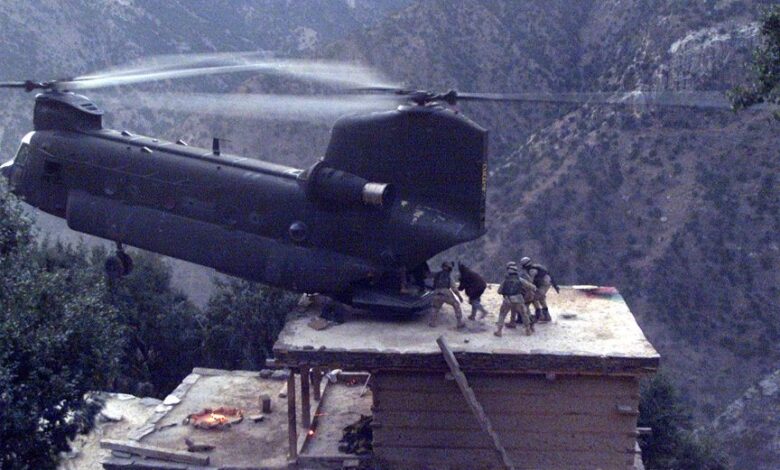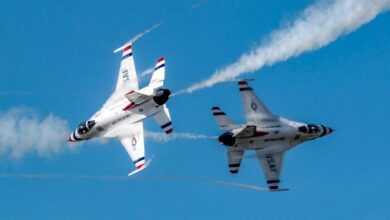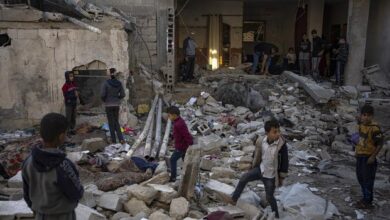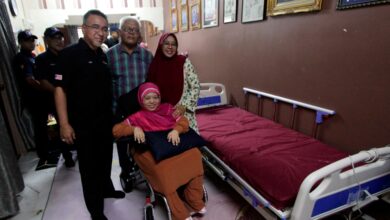20 years after iconic Afghanistan photo, pilots recall the moment

What might be the most iconic photo of the Afghanistan war turns 20 years old this week.
On Nov. 10, 2003, two pilots in the Pennsylvania National Guard’s 104th Aviation Regiment responded to a call to from solidiers of the 10th Mountain Division who needed to move detainees from a mountain-side village in northeastern Afghanistan to Bagram Airfield.
According to a press release from the Pennsylvania Guard on the photo’s anniversary, Chief Warrant Officer 3 Larry Murphy was at the controls of the Chinook as it neared the village. The steep terrain made landing impossible but the 10th Mountain troops were able to reach the roof of a building.
Without a better option, Murphy rotated the helicopter so that, while still in a hover, its rear wheels touched down on the roof, allowing soldiers to load the detainees into the back. The village sat at an elevation of around 8,500 feet and the house was about 1,500 to 2,000 feet above the valley floor, Murphy recalled.
“We took a look at it and saw that we had blade clearance on the trees, and we can sneak it in there,” Murphy said in the Army release. “It looks pretty tenuous putting a 50,000-pound aircraft on a mud hut, but if you look at it, it’s a fairy sturdy structure.”
But just above the house was Army photographer Sgt. Greg Heath, who snapped a picture that appears to capture the Chinook defying gravity, hanging over the house with just two rear wheels on the roof.
“We didn’t think anything about it at the time,” Murphy said. “It was a little bit of a job getting it on there, but nothing we hadn’t done before.”
The photo quickly became an iconic image of U.S. troops adapting and fighting in Afghanistan’s rugged, inhospitable terrain.

In truth, the pilots say, it was a routine maneuver known as a pinnacle landing.
“The day before, I did a one-wheel landing on a mountainside picking up a guy with a broken ankle,” said Chief Warrant Officer 3 Paul Barnes, the flight’s other pilot. “It’s just part of what we did. You got to work with the terrain.”
Murphy credited his crew – soldiers from the Connecticut and Pennsylvania guards – for helping him make the unique landing. Pilots in Chinooks — like nearly all aircraft — cannot see backwards, instead relying on instructions from their crew as a “verbal remote control,” he said.
“I got a guy that’s back there, he’s out on the ramp and he’s saying, ‘Left two, down five, down one, over four,’” Murphy described.
The Chinook helicopter is a heavy-lift aircraft that became the Army’s main cargo and troop transport option during the wars in Afghanistan and Iraq. Its tandem-rotor design, with engines turning two main rotors, proved indispensable in the high mountains of Afghanistan, where roads were few and lower-powered helicopters struggled in the thin air. Though the Army briefly grounded its fleet of Chinooks in 2022 for an engine repair, it was the primary cargo platform for the Army for wars in Afghanistan and Iraq.
In 2003, Murphy’s unit was initially mobilized to deploy to Iraq but rerouted to Afghanistan and based at Kandahar Airfield. In October, part of their unit was sent to Bagram Airfield to support Operation Mountain Resolve in northeastern Afghanistan.
Though the war was just two years old in 2003, the Pennsylvania Guard crews were all highly experienced, Murphy said, with an average age around 40. Some of the pilots on the rotation had logged hours as Huey pilots in Vietnam.
The forward-deployed crews spent several days conducting resupply missions. It was on one of those missions that Murphy and Barnes were called in to assist in an evacuation from a mountainside village.
“The only reason all this happened is because there was a combat cameraman with that unit who happened to catch this point in time,” said Murphy who piloted the CH-47 Chinook helicopter. “The things that I had done on that deployment, that was probably the third or fourth most complicated thing that I did, but there was nobody to capture the other ones.”

Outside of the military, Murphy was a full-time EMS pilot with Keystone Helicopters, which transfered patients to and fromeastern Pennsylvania hospitals. He served 39 years between active duty and the National Guard and retired in 2013 as a chief warrant officer 4. Murphy now lives in North Carolina.
Barnes did not fly as a civilian but worked as an IT manager for a construction company. After 21 years with the Pennsylvania National Guard, he retired in 2004 as a chief warrant officer 4. He now lives in Grantville, Pennsylvania.
“Just about every year it pops up or somebody sends it to me,” Barnes said. “I saw it on a book cover, so I read the book, but there was nothing in it about that mission. It’s a cool memory to have and a little 15 minutes of fame thing.”





